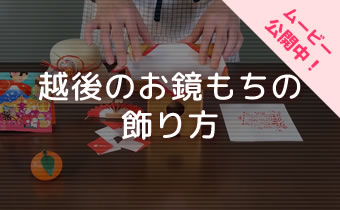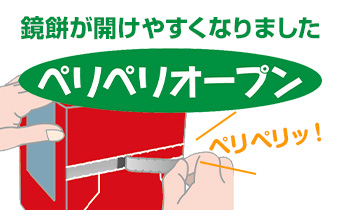- Home
- Echigo Seika's commitment
- Commitment to cutting and rounding
- 01. Crispy!Mochi mochi!This texture seems to be addictive
Commitment to cutting and rounding01
Crispy!Mochi mochi!
This texture seems to be addictive
With an oven toaster
Have a delicious rice cake!
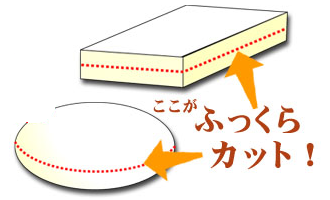
Echigo Confectionery's "Echigo Seiichi Ichiban" and "Rarely Fresh Mochi" have a notch with a depth of about 5 mm on the side of the mochi.This is Echigo Seika's commitment to "fluffy cuts."When you bake in an oven toaster, the mochi swells cleanly from this notch, and it is moist and fragrant.
Plump 1.5 times!
Beautiful baked
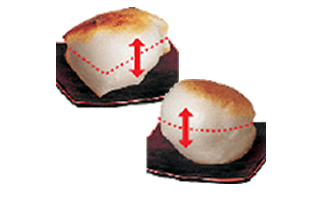
"Plump cut" is to prevent the mochi from blowing out from the side when baked in an oven toaster.As a result, the mochi swells up and down neatly (1.5 times the normal size *), and the mochi is browned and grilled without adhering to the top plate or net, making it even more delicious.
* Based on our experimental data
Delicious and long-lasting!Double barrier packaging
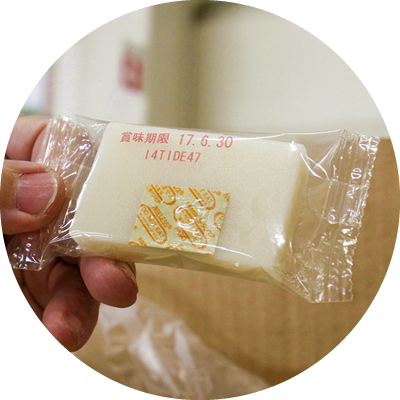
Echigo Confectionery's "Echigosei Ichiban" etc. are wrapped in double barrier.Deoxidizing material is enclosed not only in the outer bag but also in the individual wrapping package.Prevents the oxidation of rice cakes.Moisture is also retained firmly, so the texture of the moist is not impaired even after opening the outer bag.
History and evolution of rice cake

Mochi is said to have been introduced from Southeast Asia along with the introduction of rice cultivation in the latter part of the Jomon period. "Kagami mochi" was born in the Heian period.By this time, rice cakes have become an indispensable food for festivals and Buddhist rituals.In the Muromachi period, rice cake confectionery as a tea confectionery appeared with the development of the tea ceremony.
Even today, rice cakes are indispensable for celebrations and seasonal events.Hishi mochi will be displayed at the Hinamatsuri (March 3rd), and Botamochi will be offered to the Buddhist altar on the equinoctial week in spring.Kashiwa mochi on Children's Day (May 3th), Tanabata mochi on Tanabata (July 5th), Higan on the equinoctial week in autumn, and Kagami mochi on New Year's Day.Even nowadays, the traditional culture of ancient Japan is fading, the culture of mochi still remains.
In the past, mochi was a treat only for special occasions, but with the advent of packaged mochi, it has become a familiar presence that can be easily eaten at any time.
- Commitment to mirror mochi
- Commitment to cutting and rounding
- 01. Crispy!Mochi mochi!This texture seems to be addictive
- 02. I really got rid of "mortar" and "kine".Old-fashioned "pestle only" toys
- 03. product of Japanally produced glutinous rice is picked up with the famous water of Uonuma.
- 04. Deliciousness only with safety and security
- 05. Echigo Seika in the history of rice cakes!
- 06. Customer Feedback
- 07. Convenient to choose!Delicious to use!
- 08. Easy to use!A large collection of idea recipes
- Commitment to rice and Brown rice
- Commitment to rice crackers and sweets

